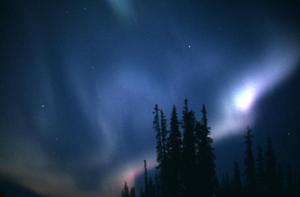Click on image for full size
Image Courtesy of Robyn Waserman, National Science Foundation
NSF, NASA Successfully Flight-Test New Balloon Over Antarctica
News story originally written on January 8, 2009
Scientists from the National Science Foundation (NSF) and the National Aeronautics and Space Administration (NASA) have completed the successful test flight of a new super-pressure (fully sealed) balloon in Antarctica.
The test flight was launched Dec. 28, 2008, from McMurdo Station, NSF's logistics hub in Antarctica. Unique atmospheric circulation over Antarctica during the summer allows scientists to launch balloons from a site near McMurdo Station and recover them from very nearly the same spot weeks later, after the balloons have circled the continent one to three times. Constant daylight in Antarctica in the summer means the temperature doesn't change from day to night, which helps the balloon stay at a nearly constant altitude for a longer time.
The purpose of this flight was to test the durability and functionality of the scientific balloon's unique pumpkin-shaped design and its new material, a lightweight polyethylene film. The new material is about the thickness of ordinary plastic food wrap.
"Our super pressure balloon development team is very proud of the tremendous success of the test flight and is focused on continued development of this new capability to fly balloons for months at a time in support of scientific investigations," said David Pierce, chief of the balloon program office at NASA Goddard Space Flight Center's Wallops Flight Facility, Wallops Island, Va. "The test flight has demonstrated that 100 day flights of large, heavy payloads is a realistic goal".
Now that the test flight is over, the team of scientists will need to make the pumpkin balloon used in the test large enough to lift a one-ton instrument to an altitude of 110,000 feet (33.53 kilometers or 20.83 miles). This balloon is expected to one day carry large scientific experiments to the stratosphere for 100 days or more and will play an important role in providing access to the near-space environment for studying science and technology. It costs a lot less than a satellite and the scientific instruments flown on it can be retrieved and launched again.















